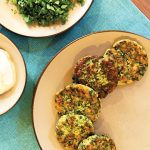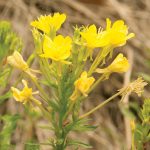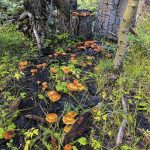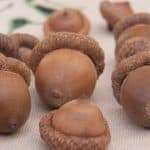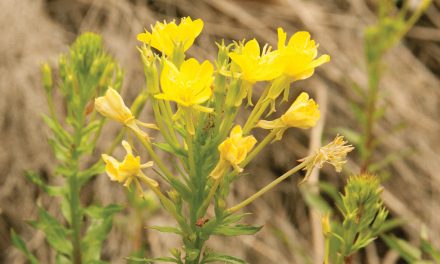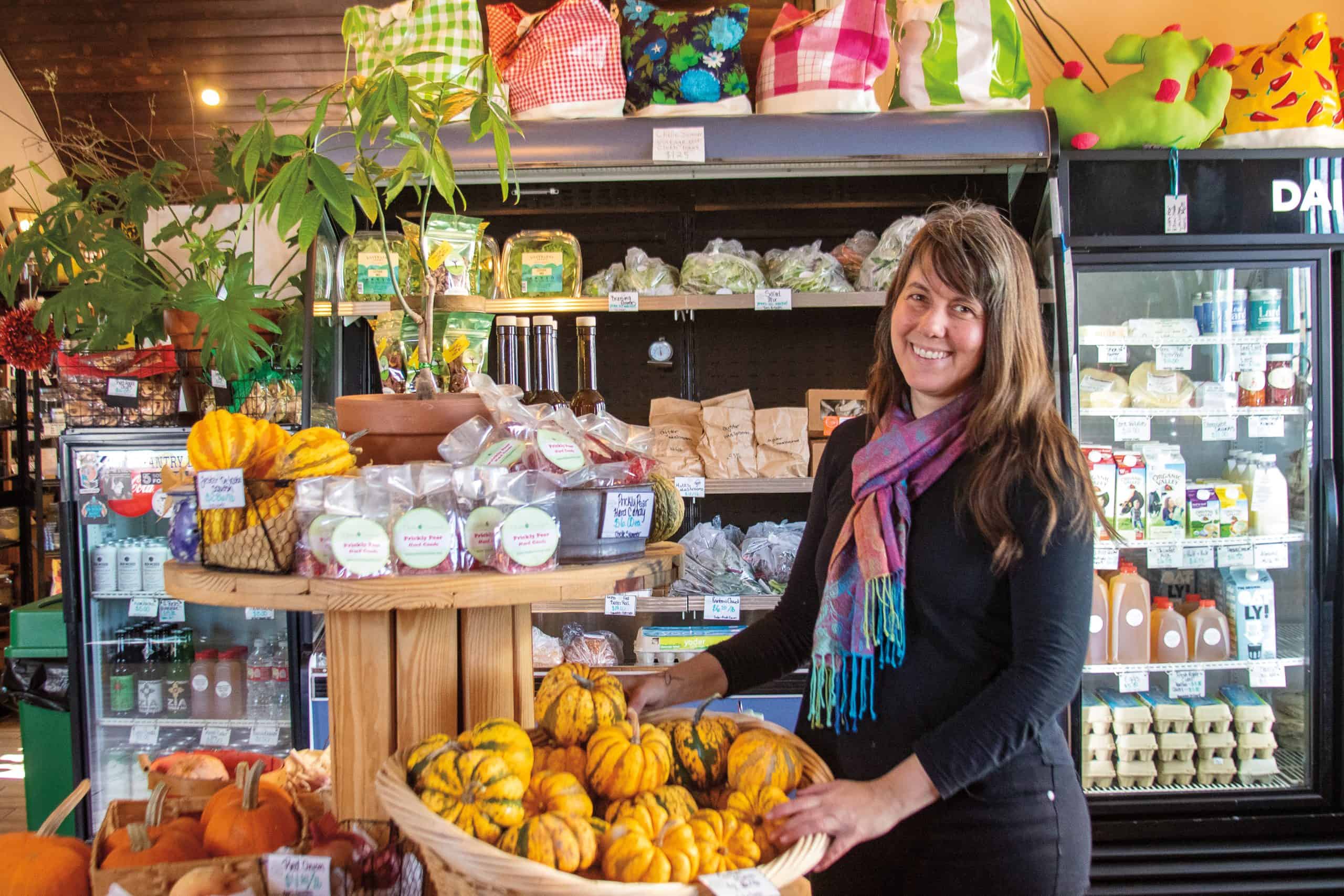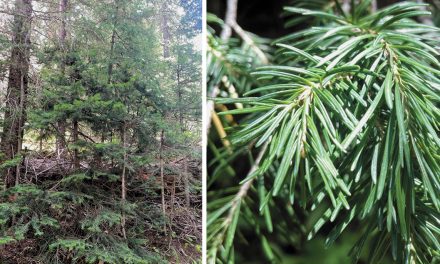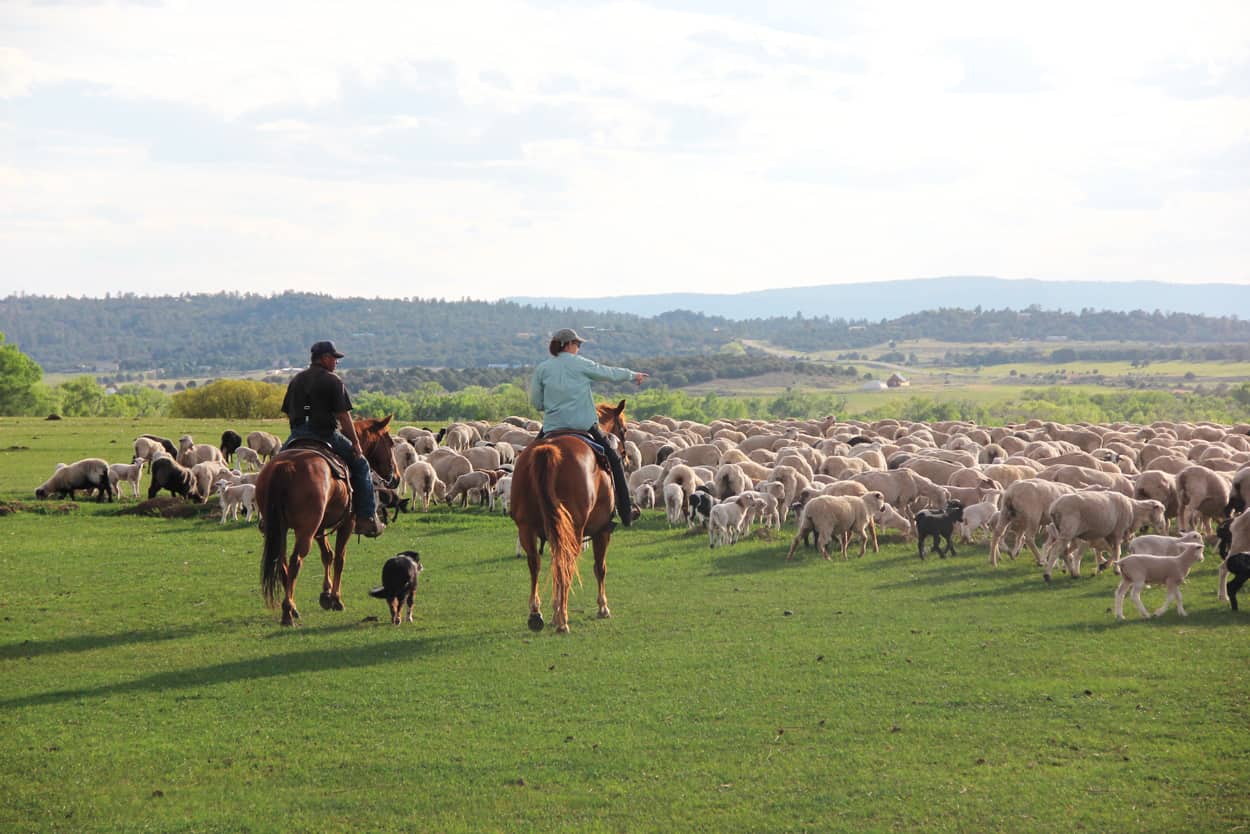They Taste as Good as They Look
Words and Photos by Ellen Zachos
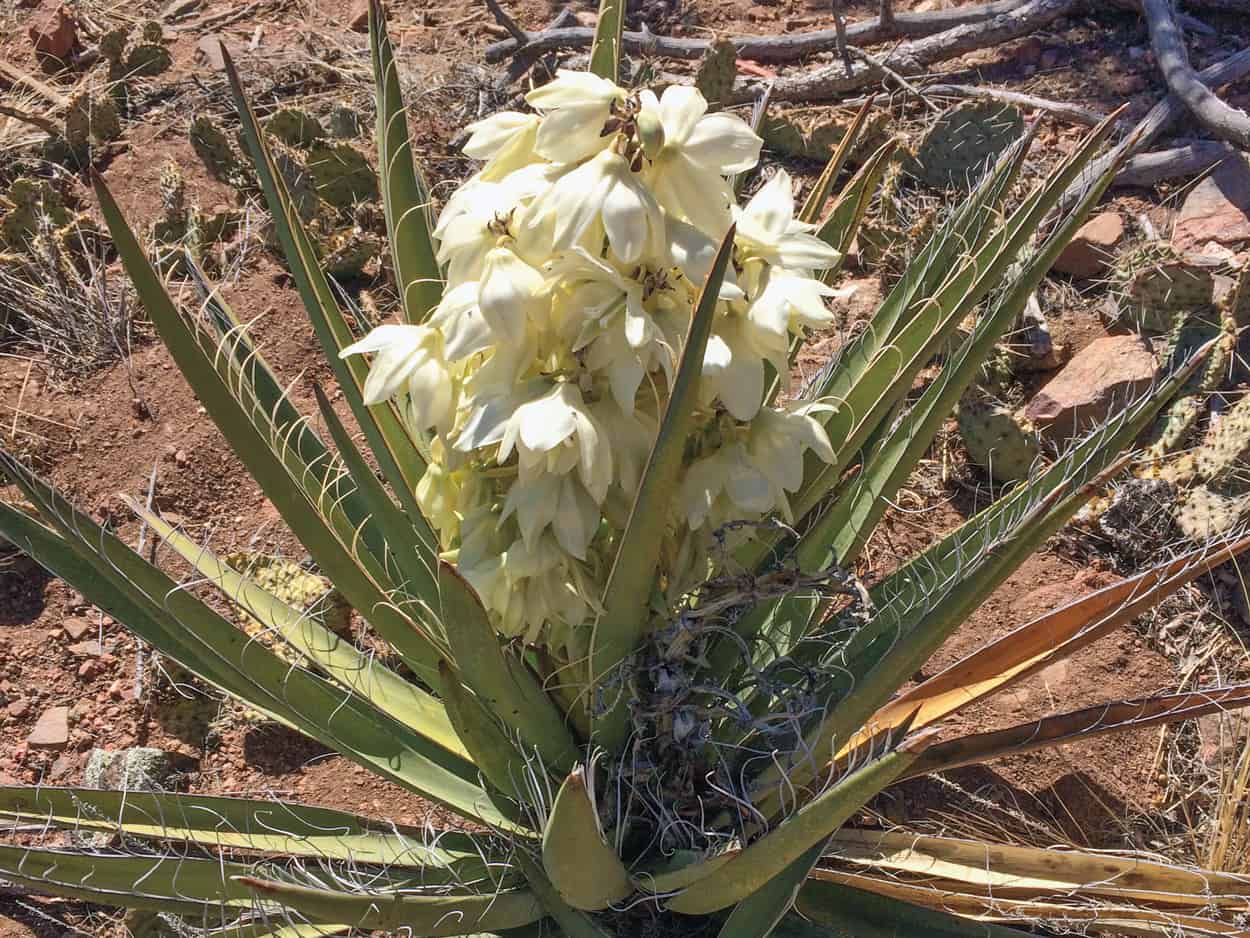
Banana yucca (Yucca baccata), one of eleven species native to New Mexico.
New Mexicans are lucky for many reasons, not the least of which is that our state flower is both beautiful and very tasty. In 1927, when the legislature made the yucca our state flower, they didn’t specify a species, so all of the plants in the genus Yucca are ours to celebrate. The USDA currently lists eleven species as native to various parts of New Mexico, with some having multiple varieties.
In northern New Mexico, banana yucca (Yucca baccata) and narrowleaf yucca (Y. glauca) are the two most common species. Both grow to be two to three feet tall, with sharply pointed evergreen leaves forming a rosette. Banana yucca leaves are approximately two inches wide, while those of narrowleaf yucca are less than an inch wide. Both produce a central stalk covered with large, graceful white flowers followed by green fruit.
Soaptree yucca (Y. elata) is most common in the southern part of the state, although it’s native as far north as Bernalillo County. It’s New Mexico’s largest yucca, and may grow to be more than twenty feet tall, with a treelike growth habit and several branches. Its common name points to its saponin-rich roots and crown, which were traditionally used as soap (and can be found in some commercial soaps and shampoos, including at the Diné-owned Nizhoni Soaps).
Yucca leaves are highly fibrous, and have long been integral to the textile arts of the Indigenous peoples of the Southwest. Archaeological evidence shows yucca cordage has been used for centuries to make belts, ladders, sandals, fishnets, and baskets. Traditional basket makers still use narrowleaf yucca today. To make cordage, the leaves are soaked, then pounded to extract the fibers, which are twisted into string or rope.

Yuccas also have several edible parts. The immature flower stalk can be cooked and eaten, but you’ll sacrifice the blooms and fruit. Yucca fruit may be dry or fleshy at maturity, depending on the species. The fruit of banana yucca is fleshy and delicious. It makes an excellent pie filling or a naturally sweet side dish, but you’ll have to deal with the yucca moth larvae if they haven’t already left the fruit to pupate underground. If that thought doesn’t make you too queasy to continue, store the ripe fruit in the freezer for a few days. You’ll find the frozen larvae at the bottom of the freezer bag. Feed them to your chickens.
Once you’ve rid your fruit of its larvae, thaw the fruit, then slice it in half and scoop out the seeds. Bake the yucca fruit at 350 degrees Fahrenheit until the flesh is soft, which should take 20 to 30 minutes, depending on how large the fruit are. Scoop out the baked yucca flesh and taste it. You may want to sweeten it just a little if you’re making pie filling, but for a side dish the natural sweetness is perfect. A few caramelized onions on top would take it to the next level.
Yucca flowers bloom from April to June, depending on where you are in New Mexico. They are plentiful and tasty, and any insects inside the flowers can be dislodged easily by rinsing or simply giving the flowers a good shake. Some people experience an itchy throat when eating raw flowers, but cooking alleviates this and also improves the flavor. Yucca flowers should either be used fresh or quickly blanched and frozen for storage. Frozen yucca flowers can be used in egg dishes, sautés, soups, and stews, but will not have the correct texture for stuffing.
NOTE ON Yucca Moths
Almost all yuccas have mutualistic relationships with moths. Flowers open at night, when the moths are active. As the moths pollinate the flowers, they also lay their eggs within the bloom. Both organisms benefit from the relationship: the plants are pollinated and the larvae have a guaranteed food source as they develop. Unfortunately for human foragers, this makes it difficult to find fruit that doesn’t come with a generous side order of protein . . . i.e., yucca moth larvae.

Stuffed Yucca Flowers
Ingredients
- 25 rinsed yucca flowers, pistils and stamens removed and reserved
- 1/4 cup onion, chopped
- Olive oil
- 1/2 teaspoon salt
- 1/2 teaspoon ground sumac
- 2 tablespoons green chile, chopped
- 1/2 cup cream cheese, room temperature
- 1 egg, beaten
- All-purpose flour
Instructions
- Chop the yucca pistils and stamens and the onion into small pieces (approximately 1/4–1/2 inch) and sauté in olive oil until the onions are translucent. Add the salt, sumac powder, and chopped green chile, and stir to combine. Remove from the heat.
- Place the cream cheese in a bowl and fold in the warmed ingredients to distribute them evenly.
- Fill each yucca flower with a teaspoon of the cream cheese mixture and gently press the flowers closed. Dip each one in the beaten egg, then dredge in the flour and set aside.
- Fry the stuffed blossoms in oil until they are a crispy golden brown, and serve warm.

Ellen Zachos
Ellen Zachos lives in Santa Fe and is the author of eight books, including the recently released The Forager's Pantry. She is the co-host of the Plantrama podcast (plantrama.com), and writes about wild foods at backyardforager.com. Zachos offers several online foraging courses at backyard-forager.thinkific.com.



